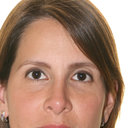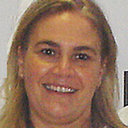Epilepsia partialis continua: aetiology, semiology and prognosis in a Spanish adult cohort.
Słowa kluczowe
Abstrakcyjny
To describe the semiological features in patients suffering with Epilepsia Partialis Continua (EPC), also referred as Kozhevnikov syndrome and their relationship with aetiology, duration, and prognosis, as well as recurrence during follow-up. We analysed consecutive EPC patients diagnosed and followed in our centre over a seven-and-a half year period. We collected demographic and clinical data, along with neuroimaging and EEG recordings. All patients were followed for more than six months. Patients were categorised with single body area or multiple body area involvement according to the body parts affected. Recurrence was defined as a second EPC episode after one week. We collected data from 27 adult patients; 70.4% were men, the mean age was 65.2 years old (range: 17-89 years), and 40.7% had previous epilepsy. EPC causes were structural in 85.1% (stroke being the most frequent; 44.4%), metabolic in 11.1%, and of unknown origin in 7.4%. A cortical lesion on neuroimaging was shown in 70.4%. Involvement of multiple body areas was reported in 55.6% of patients. The optimal cut-off period to predict death was nine days (with a sensitivity of 62.5% and specificity of 75%; p=0.039), and this group of patients exhibited more multiple body area involvement (88.9% vs 38.9%; p=0.04). During follow-up, patients with cortical lesions had more EPC relapses (p=0.037). The most frequent aetiology of EPC in our patients was stroke. Multiple body area involvement and duration were associated with mortality. Patients with cortical lesions had more EPC relapses during follow-up.



